Cipher Virus File: MedusaLocker Ransomware Variant
Cipher ransomware is a recent variant in the MedusaLocker ransomware family. This malware encrypts files on an infected system, adding a .cipher extension to affected files. Victims are then asked to pay a ransom for a potential decryption key. Payment instructions are provided in a file named !-Recovery_Instructions-!.html.
Engaging with ransomware operators is generally discouraged. There is no assurance that paying will restore your files, and it only incentivizes further criminal activities. A more effective approach is to invest in robust anti-malware protection and maintain secure backups of your important data.
Note: MedusaLocker, including its .cipher variant, targets a wide range of files, including audio, video, images, backups, and other personal files stored on compromised systems.
![Cipher Ransomware [.cipher File Virus]](https://cdn.sensorstechforum.com/wp-content/uploads/2024/11/Cipher-Ransomware-.cipher-File-Virus-1024x585.jpg)
Cipher Virus Summary
| Name | Cipher Virus |
| File Extension | .Cipher |
| Type | Ransomware, Cryptovirus |
| Short Description | The ransomware encrypts files on your computer system and demands a ransom to be paid to allegedly recover them. |
| Symptoms | The MedusaLocker ransomware will encrypt your files by appending the .cipher extension to them. |
| Ransom Demanding Note | !-Recovery_Instructions-!.html |
| Distribution Method | Spam Emails, Email Attachments |
| Detection Tool |
See If Your System Has Been Affected by malware
Download
Malware Removal Tool
|
.Cipher Virus File – How Did It Infect My PC and What Happened?
The .Cipher Virus File is spread through a payload dropper that activates the malicious script associated with this MedusaLocker ransomware variant. This ransomware may deliver its payload through social media, file-sharing services, or via freeware downloaded from various software platforms and torrent sites—methods commonly used in previous campaigns. These sources can sometimes conceal the malicious script behind the cryptovirus.
How does Cipher ransomware work?
Shortly said, the ransomware encrypts your files and displays specific ransomware instructions inside a ransom note, called HOW_TO_RECOVER_DATA.html.
The note states the following:
If you get this message, your network was hacked!
After we gained full access to your servers, we first downloaded a large amount of sensitive data and then encrypted all the data stored on them.That includes personal information on your clients, partners, your personnel, accounting documents, and other crucial files that are necessary for your company to work normally.
We used modern complicated algorithms, so you or any recovery service will not be able to decrypt files without our help, wasting time on these attempts instead of negotiations can be fatal for your company.
Make sure to act within 72 hours or the negotiations will be considered failed!
Inform your superior management about what’s going on.
Contact us for pricing and decryption software.
Contact us by email:
Mikesupp77@outlook.com
If you do not receive a response within 24 hours, please contact us at our additional contacts:
1) Download for TOX CHAT hxxps://tox.chat/download.html2) Open chat
Add ID Chat:
3C9D49B928FDC3C15F0314217623A71B865909 B308576B4B0D10AEA62C98677B4A3F160D5C93
If we did not answer you, leave the chat enabled, the operator will contact you!To verify the possibility of the recovery of your files we can decrypted 1-3 file for free.
Attach file to the letter (no more than 5Mb).
If you and us succeed the negotiations we will grant you:
complete confidentiality, we will keep in secret any information regarding to attack, your company will act as if nothing had happened.
comprehensive information about vulnerabilities of your network and security report.
software and instructions to decrypt all the data that was encrypted.
all sensitive downloaded data will be permanently deleted from our cloud storage and we will provide an erasure log.
Our options if you act like nothing’s happening, refuse to make a deal or fail the negotiations:
inform the media and independent journalists about what happened to your servers. To prove it we’ll publish a chunk of private data that you should have ciphered if you care about potential breaches. Moreover, your company will inevitably take decent reputational loss which is hard to assess precisely.
inform your clients, employees, partners by phone, e-mail, sms and social networks that you haven’t prevent their data leakage. You will violate laws about private data protection.
start DDOS attack on you website and infrastructures.
personal data stored will be put on sale on the Darknet to find anyone interested to buy useful information regarding your company. It could be data mining agencies or your market competitors.
publish all the discovered vulnerabilities found in your network, so anyone will do anything with it.
Why pay us?
We care about our reputation. You are welcome to google our cases up and be sure that we don’t have a single case of failure to provide what we promissed.Turning this issue to a bug bounty will save your private information, reputation and will allow you to use the security report and avoid this kind of situations in future.
Your personal ID
Your ID: –
We advise against following these instructions and paying the ransomware criminals.
The extortionists want you to pay a ransom for the alleged restoration of your files, as seen in most ransomware infection cases. .Cipher Virus File ransomware could make entries in the Windows Registry to achieve persistence, and could launch or repress processes in a Windows system. All encrypted files will receive the .Cipher extension.
Audio, video, image files as well as documents, backups and banking data can be encrypted by the ransomware, as a result of its intrusion.
The .Cipher Virus File could be set to erase all the Shadow Volume Copies from the Windows operating system with the help of the command:
→vssadmin.exe delete shadows /all /Quiet
If your computer device is infected with malware of any type or you have suspicions of intrusion, continue reading to see what actions you could take.
Remove .Cipher Virus File
If your computer got infected with the .Cipher Virus File, you should have at least a bit of experience in removing malware. You should get rid of this ransomware as quickly as possible before it gets the opportunity to spread further and infect other computers. You can remove the ransomware by following the removal steps below.
- Step 1
- Step 2
- Step 3
- Step 4
- Step 5
Step 1: Scan for Cipher Virus with SpyHunter Anti-Malware Tool
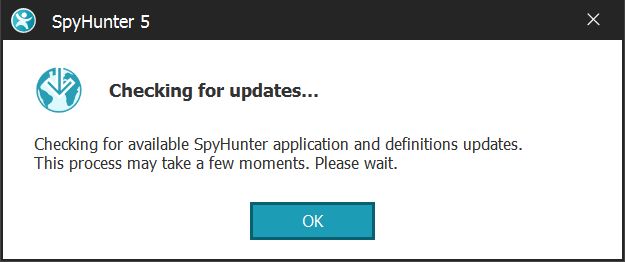
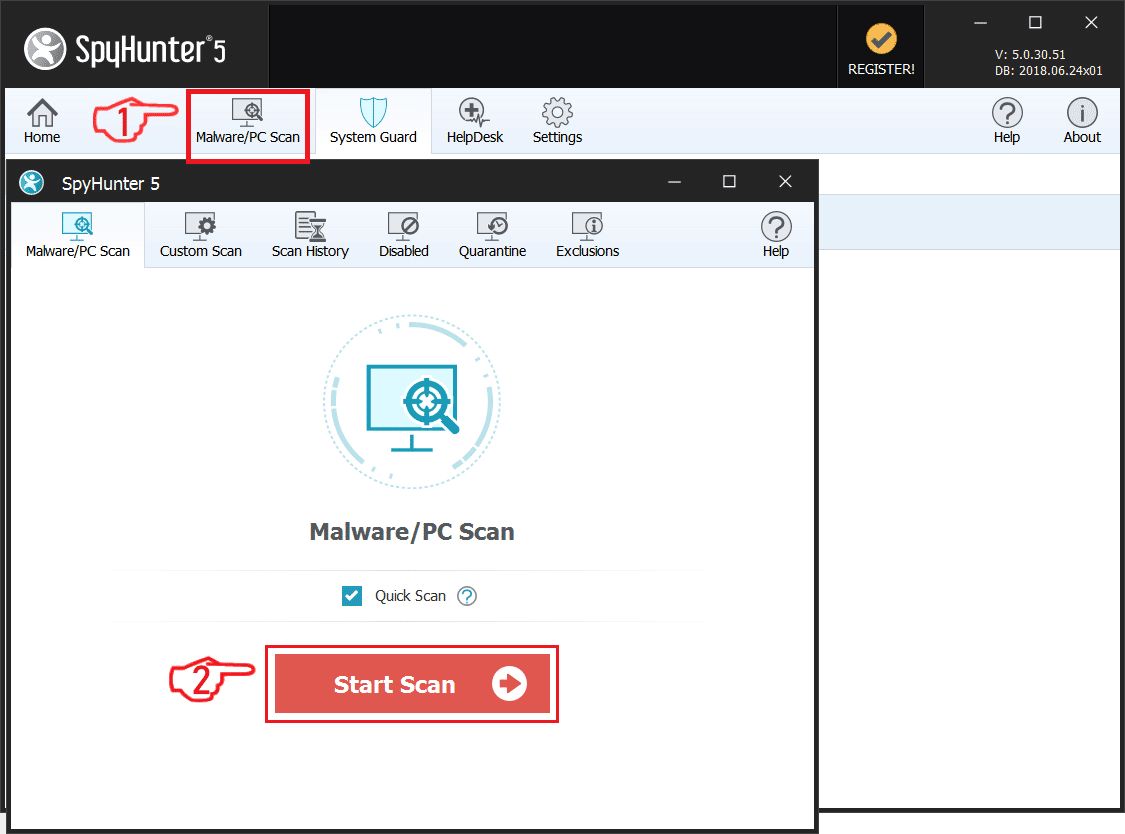
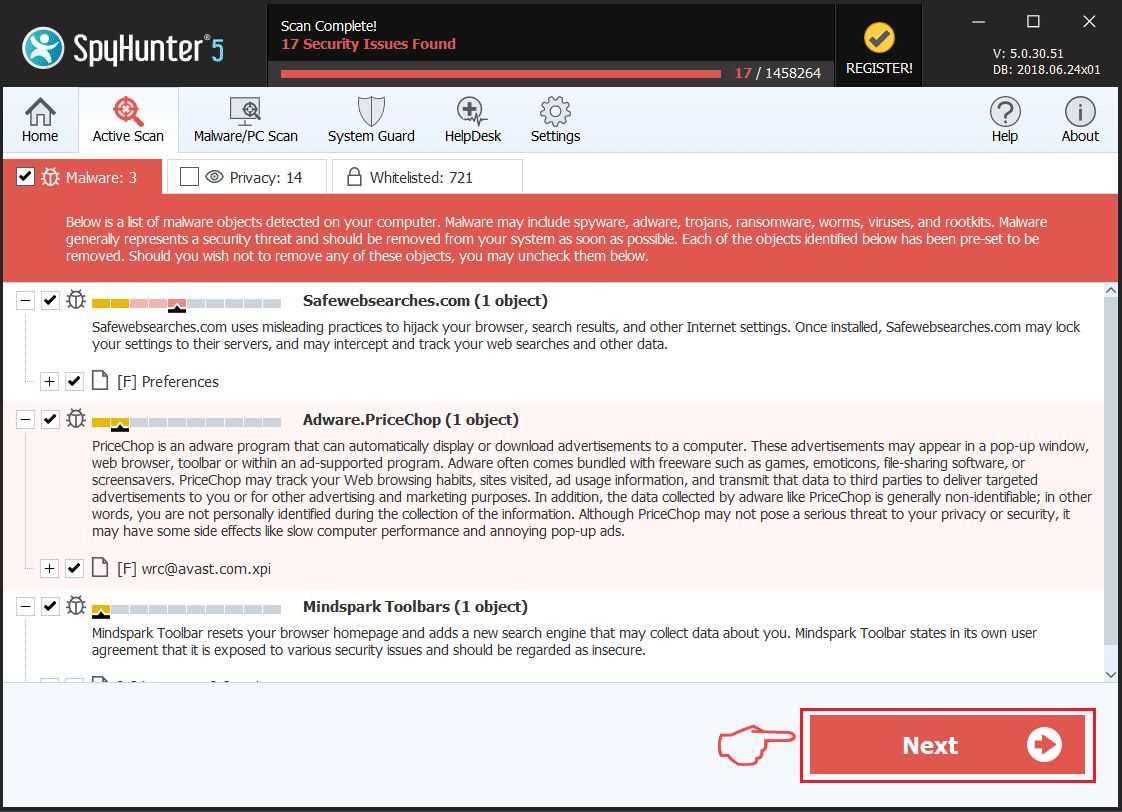
Ransomware Automatic Removal - Video Guide
Step 2: Uninstall Cipher Virus and related malware from Windows
Here is a method in few easy steps that should be able to uninstall most programs. No matter if you are using Windows 10, 8, 7, Vista or XP, those steps will get the job done. Dragging the program or its folder to the recycle bin can be a very bad decision. If you do that, bits and pieces of the program are left behind, and that can lead to unstable work of your PC, errors with the file type associations and other unpleasant activities. The proper way to get a program off your computer is to Uninstall it. To do that:

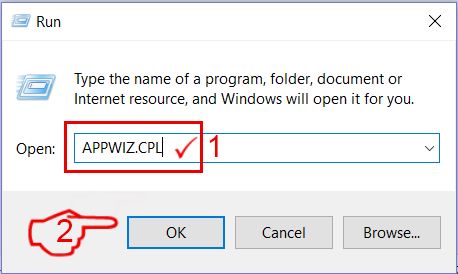
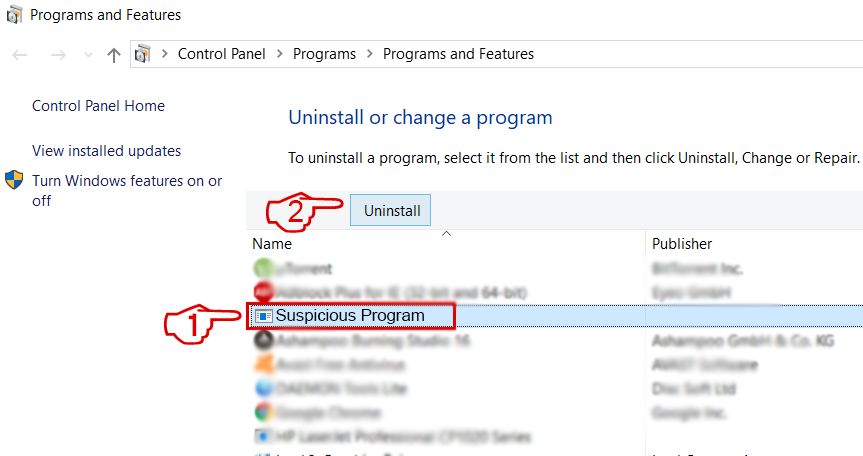 Follow the instructions above and you will successfully delete most unwanted and malicious programs.
Follow the instructions above and you will successfully delete most unwanted and malicious programs.
Step 3: Clean any registries, created by Cipher Virus on your computer.
The usually targeted registries of Windows machines are the following:
- HKEY_LOCAL_MACHINE\Software\Microsoft\Windows\CurrentVersion\Run
- HKEY_CURRENT_USER\Software\Microsoft\Windows\CurrentVersion\Run
- HKEY_LOCAL_MACHINE\Software\Microsoft\Windows\CurrentVersion\RunOnce
- HKEY_CURRENT_USER\Software\Microsoft\Windows\CurrentVersion\RunOnce
You can access them by opening the Windows registry editor and deleting any values, created by Cipher Virus there. This can happen by following the steps underneath:
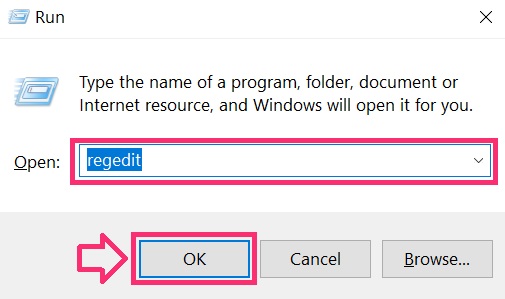

 Tip: To find a virus-created value, you can right-click on it and click "Modify" to see which file it is set to run. If this is the virus file location, remove the value.
Tip: To find a virus-created value, you can right-click on it and click "Modify" to see which file it is set to run. If this is the virus file location, remove the value.
Before starting "Step 4", please boot back into Normal mode, in case you are currently in Safe Mode.
This will enable you to install and use SpyHunter 5 successfully.
Step 4: Boot Your PC In Safe Mode to isolate and remove Cipher Virus

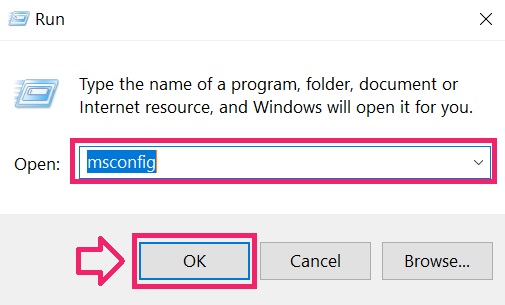
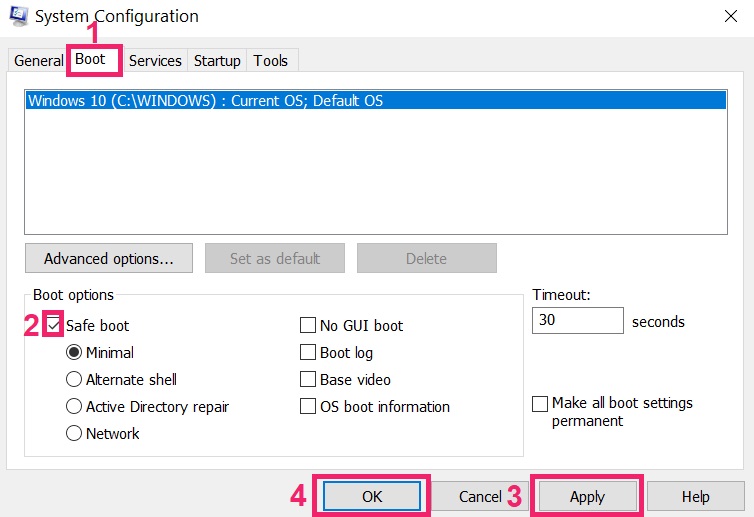
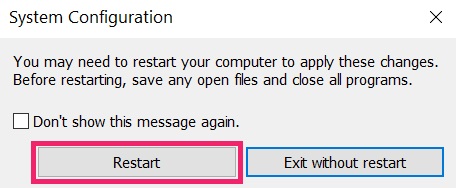
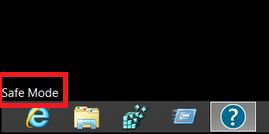
Step 5: Try to Restore Files Encrypted by Cipher Virus.
Method 1: Use STOP Decrypter by Emsisoft.
Not all variants of this ransomware can be decrypted for free, but we have added the decryptor used by researchers that is often updated with the variants which become eventually decrypted. You can try and decrypt your files using the instructions below, but if they do not work, then unfortunately your variant of the ransomware virus is not decryptable.
Follow the instructions below to use the Emsisoft decrypter and decrypt your files for free. You can download the Emsisoft decryption tool linked here and then follow the steps provided below:
1 Right-click on the decrypter and click on Run as Administrator as shown below:
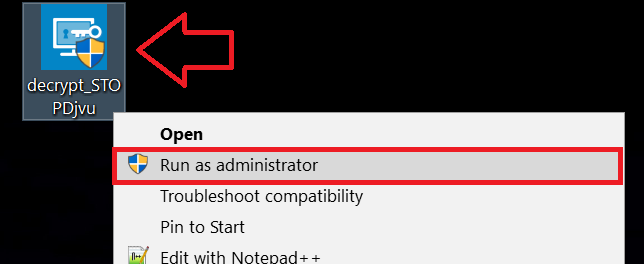
2. Agree with the license terms:
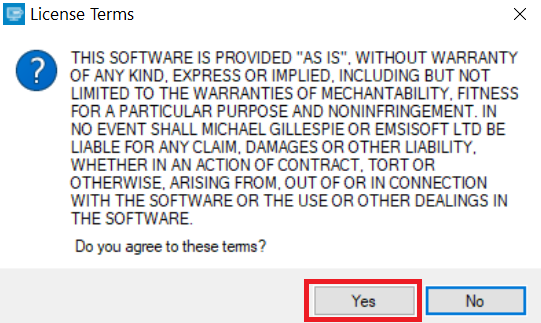
3. Click on "Add Folder" and then add the folders where you want files decrypted as shown underneath:
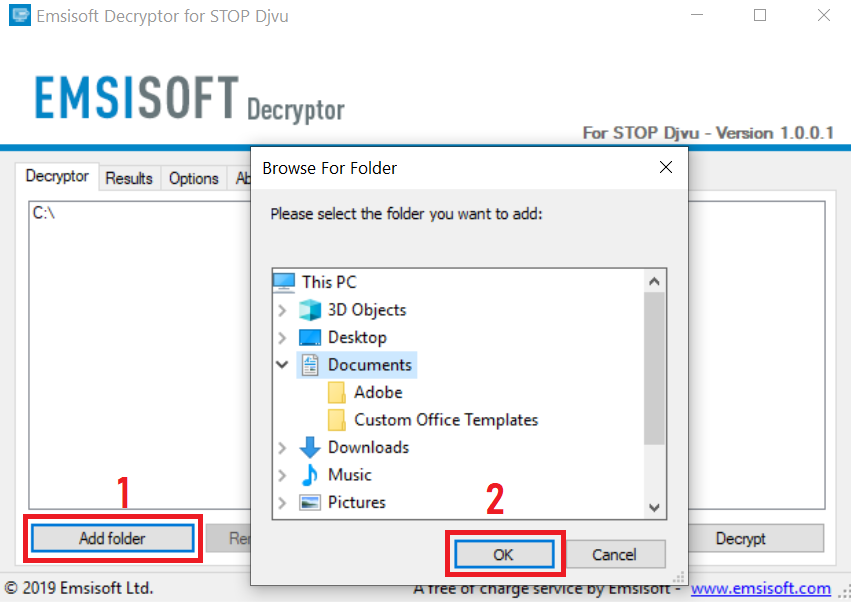
4. Click on "Decrypt" and wait for your files to be decoded.
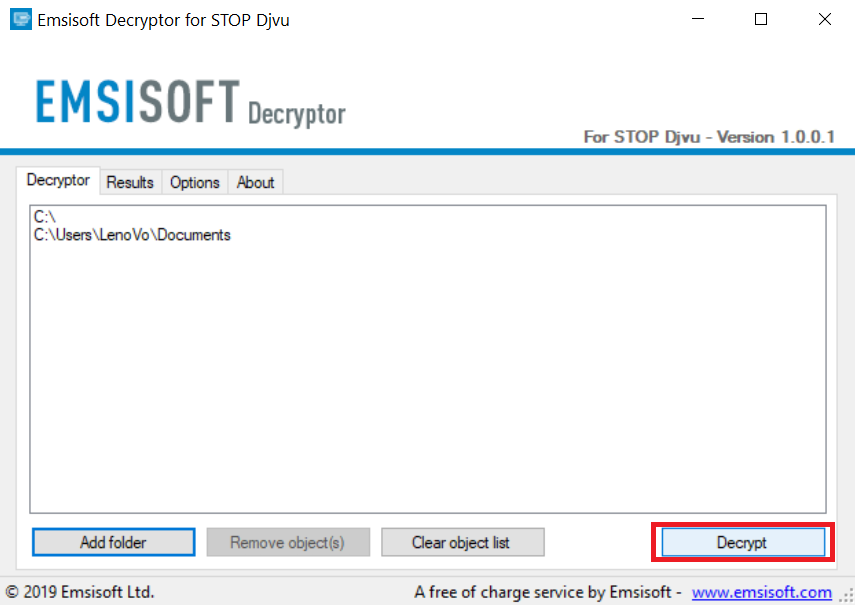
Note: Credit for the decryptor goes to Emsisoft researchers who have made the breakthrough with this virus.
Method 2: Use data recovery software
Ransomware infections and Cipher Virus aim to encrypt your files using an encryption algorithm which may be very difficult to decrypt. This is why we have suggested a data recovery method that may help you go around direct decryption and try to restore your files. Bear in mind that this method may not be 100% effective but may also help you a little or a lot in different situations.
Simply click on the link and on the website menus on the top, choose Data Recovery - Data Recovery Wizard for Windows or Mac (depending on your OS), and then download and run the tool.
Cipher Virus-FAQ
What is Cipher Virus Ransomware?
Cipher Virus is a ransomware infection - the malicious software that enters your computer silently and blocks either access to the computer itself or encrypt your files.
Many ransomware viruses use sophisticated encryption algorithms to make your files inaccessible. The goal of ransomware infections is to demand that you pay a ransom payment to get access to your files back.
What Does Cipher Virus Ransomware Do?
Ransomware in general is a malicious software that is designed to block access to your computer or files until a ransom is paid.
Ransomware viruses can also damage your system, corrupt data and delete files, resulting in the permanent loss of important files.
How Does Cipher Virus Infect?
Via several ways.Cipher Virus Ransomware infects computers by being sent via phishing emails, containing virus attachment. This attachment is usually masked as an important document, like an invoice, bank document or even a plane ticket and it looks very convincing to users.
Another way you may become a victim of Cipher Virus is if you download a fake installer, crack or patch from a low reputation website or if you click on a virus link. Many users report getting a ransomware infection by downloading torrents.
How to Open .Cipher Virus files?
You can't without a decryptor. At this point, the .Cipher Virus files are encrypted. You can only open them once they are decrypted using a specific decryption key for the particular algorithm.
What to Do If a Decryptor Does Not Work?
Do not panic, and backup the files. If a decryptor did not decrypt your .Cipher Virus files successfully, then do not despair, because this virus is still new.
Can I Restore ".Cipher Virus" Files?
Yes, sometimes files can be restored. We have suggested several file recovery methods that could work if you want to restore .Cipher Virus files.
These methods are in no way 100% guaranteed that you will be able to get your files back. But if you have a backup, your chances of success are much greater.
How To Get Rid of Cipher Virus Virus?
The safest way and the most efficient one for the removal of this ransomware infection is the use a professional anti-malware program.
It will scan for and locate Cipher Virus ransomware and then remove it without causing any additional harm to your important .Cipher Virus files.
Can I Report Ransomware to Authorities?
In case your computer got infected with a ransomware infection, you can report it to the local Police departments. It can help authorities worldwide track and determine the perpetrators behind the virus that has infected your computer.
Below, we have prepared a list with government websites, where you can file a report in case you are a victim of a cybercrime:
Cyber-security authorities, responsible for handling ransomware attack reports in different regions all over the world:
Germany - Offizielles Portal der deutschen Polizei
United States - IC3 Internet Crime Complaint Centre
United Kingdom - Action Fraud Police
France - Ministère de l'Intérieur
Italy - Polizia Di Stato
Spain - Policía Nacional
Netherlands - Politie
Poland - Policja
Portugal - Polícia Judiciária
Greece - Cyber Crime Unit (Hellenic Police)
India - Mumbai Police - CyberCrime Investigation Cell
Australia - Australian High Tech Crime Center
Reports may be responded to in different timeframes, depending on your local authorities.
Can You Stop Ransomware from Encrypting Your Files?
Yes, you can prevent ransomware. The best way to do this is to ensure your computer system is updated with the latest security patches, use a reputable anti-malware program and firewall, backup your important files frequently, and avoid clicking on malicious links or downloading unknown files.
Can Cipher Virus Ransomware Steal Your Data?
Yes, in most cases ransomware will steal your information. It is a form of malware that steals data from a user's computer, encrypts it, and then demands a ransom in order to decrypt it.
In many cases, the malware authors or attackers will threaten to delete the data or publish it online unless the ransom is paid.
Can Ransomware Infect WiFi?
Yes, ransomware can infect WiFi networks, as malicious actors can use it to gain control of the network, steal confidential data, and lock out users. If a ransomware attack is successful, it could lead to a loss of service and/or data, and in some cases, financial losses.
Should I Pay Ransomware?
No, you should not pay ransomware extortionists. Paying them only encourages criminals and does not guarantee that the files or data will be restored. The better approach is to have a secure backup of important data and be vigilant about security in the first place.
What Happens If I Don't Pay Ransom?
If you don't pay the ransom, the hackers may still have access to your computer, data, or files and may continue to threaten to expose or delete them, or even use them to commit cybercrimes. In some cases, they may even continue to demand additional ransom payments.
Can a Ransomware Attack Be Detected?
Yes, ransomware can be detected. Anti-malware software and other advanced security tools can detect ransomware and alert the user when it is present on a machine.
It is important to stay up-to-date on the latest security measures and to keep security software updated to ensure ransomware can be detected and prevented.
Do Ransomware Criminals Get Caught?
Yes, ransomware criminals do get caught. Law enforcement agencies, such as the FBI, Interpol and others have been successful in tracking down and prosecuting ransomware criminals in the US and other countries. As ransomware threats continue to increase, so does the enforcement activity.
About the Cipher Virus Research
The content we publish on SensorsTechForum.com, this Cipher Virus how-to removal guide included, is the outcome of extensive research, hard work and our team’s devotion to help you remove the specific malware and restore your encrypted files.
How did we conduct the research on this ransomware?
Our research is based on an independent investigation. We are in contact with independent security researchers, and as such, we receive daily updates on the latest malware and ransomware definitions.
Furthermore, the research behind the Cipher Virus ransomware threat is backed with VirusTotal and the NoMoreRansom project.
To better understand the ransomware threat, please refer to the following articles which provide knowledgeable details.
As a site that has been dedicated to providing free removal instructions for ransomware and malware since 2014, SensorsTechForum’s recommendation is to only pay attention to trustworthy sources.
How to recognize trustworthy sources:
- Always check "About Us" web page.
- Profile of the content creator.
- Make sure that real people are behind the site and not fake names and profiles.
- Verify Facebook, LinkedIn and Twitter personal profiles.


